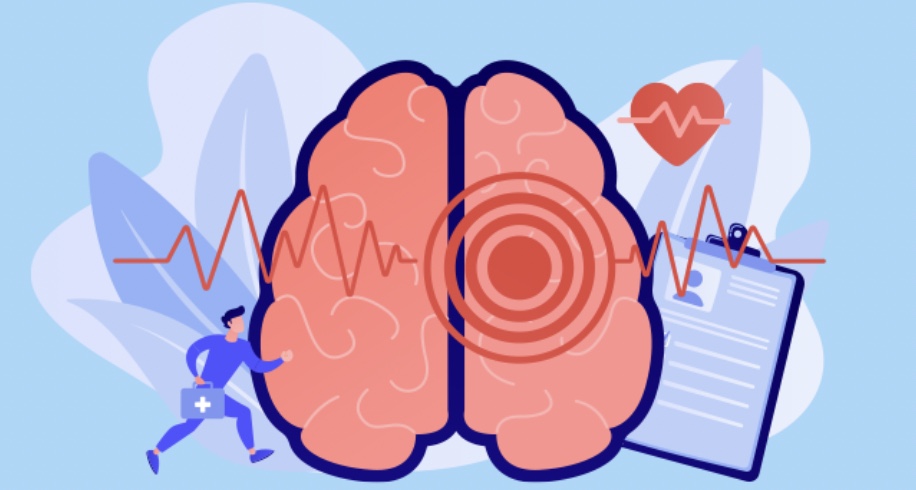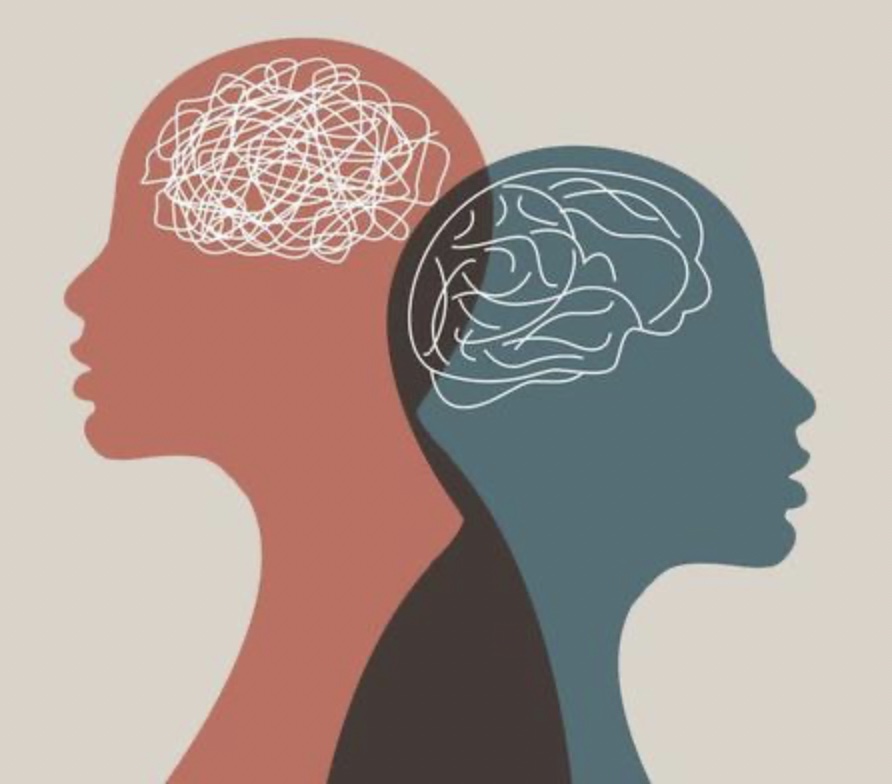
Image Citation: (BuzzRx, n.d.) Alt. Text: An illustration of a brain with a target symbol in the center, surrounded by heartbeat lines, a heart icon, and a medical clipboard. A person carrying a medical kit is running toward the brain, symbolizing health and stress management.
Learning Objectives:
By the end of this lesson, students will be able to:
- Identify how stress activates the hypothalamic-pituitary-adrenal (HPA) axis and the role of cortisol in the stress response.
- Describe the neuropsychological and physiological effects of prolonged stress on the brain, particularly on the hippocampus, amygdala, and prefrontal cortex
- Analyze how chronic stress affects emotional regulation by altering key brain regions.
- Recognize the importance of stress management for maintaining cognitive, emotional and immune health.
Additionally, Students should be able to:
Critically think about the relationship between prolonged stress and its impact on the brain.
Reflect on personal stressors and evaluate how they might impact cognitive and emotional functioning.
Transfer Knowledge – about the effect of stress on brain function and start to think about how this can be reduced to better both their academic and personal life.
Overview:
Stress is a natural and necessary response to challenges and demands. However stress has a dual role within the body:
-
- Short-term Stress: Stress is associated with the human brain in the way that it activates the brain’s hypothalamic-pituitary adrenal (HPA) axis. In short bursts, this response is beneficial. It can enhance focus, and reaction times to handle immediate challenges.
- Example: This can help an individual escape danger and activate fight or flight.
- Long-term stress: when stress is prolonged, the continuous activation of the HPA axis and elevated cortisol levels that result can be harmful. Over time this can negatively impact various structures of the brain and in turn impact brain structure and function.
| Feature | Acute Stress | Chronic Stress |
| Definition | Short-term, immediate response to a challenge or demand. | Persistent, long-lasting stress that occurs over an extended period. |
| Duration | Temporary, lasting minutes to hours. | Prolonged, lasting weeks, months, or even years. |
| Cause | Specific, identifiable event or threat. | Ongoing pressures, such as financial strain, work issues, or relationship problems. |
| HPA Axis Activation | Brief activation; resolves once the stressor is removed. | Continuous activation; prolonged exposure t cortisol. |
| Effects on Brain | Enhances focus, memory, and reaction time. | Impairs memory, increases anxiety, and affects decision-making. |
| Physical Effects | Increased heart rate, quickened breathing, and heightened energy levels. | Fatigue, weakened immune system, and increased risk of chronic diseases (e.g., heart disease). |
| Emotional Effects | Temporary anxiety or nervousness. | Persistent feelings of anxiety, depression, and emotional exhaustion. |
| Example | Preparing for an exam or narrowly avoiding a car accident. | Dealing with long-term unemployment or caregiving for a chronically ill family member. |
| Adaptiveness | Adaptive and beneficial in managing immediate threats. | Maladaptive, leading to potential harm to physical and mental health. |
Lesson Focus:
- Today lesson will focus on how stress specifically affects the brain focusing on three regions:
→ Hippocampus
→Amygdala
→ Prefrontal Cortex
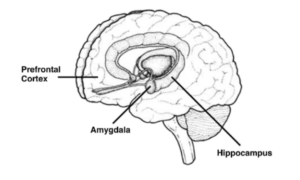
(ResearchGate, n.d.) Alt. text: A labeled diagram of a human brain highlighting three key regions: the prefrontal cortex at the front, the amygdala in the center, and the hippocampus toward the lower middle, illustrating their roles in brain function and stress response
Question for the class: What comes to mind when you think of stress ? How does it affect you physically mentally, or emotionally ?
Reason for this topic → By learning about the brain’s response to chronic stress we can better understand why managing stress is so critical for maintaining cognitive and emotional health.
Part 1: We will first discuss the HPA axis and Cortisol control
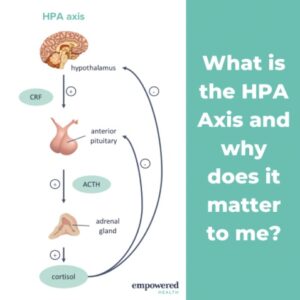
(Empowered Health Institute, n.d.) Alt. Text: An infographic explaining the HPA axis. It shows the process starting with the hypothalamus releasing CRF, signaling the anterior pituitary to release ACTH, which then activates the adrenal gland to produce cortisol. The text on the right asks, “What is the HPA Axis and why does it matter to me?
- Explanation of HPA axis and Cortisol release → youtube video:
Transcript for this video is available directly beneath the video once following the link to YouTube.
→ When you encounter a stressful situation HPA axis is activated, starting with the hypothalamus, which then signals the pituitary gland, which then signals the adrenals glands to release cortisol. Cortisol is the body’s primary stress hormone.
→ as previously mentioned in short-term situations the release of cortisol can enhance focus and activate the body’s fight or flight response to take on immediate challenges.
→ however when this system is activated for prolonged periods of time excessive cortisol levels result which can have serious implications on the brain and the overall health of an individual.
- Part 2: We will now discuss the effects of chronic stress on Brain Regions
- Some of the resulting damage from prolonged activation of the HPA axis and overabundance of cortisol release includes:
→ Damage to the hippocampus (this area is responsible for memory and emotional regulation, therefore damage here can result in forgetfulness and difficulty managing emotions).
→ Chronic stress also increases the size and sensitivity of the amygdala. This is an emotional processing center within the brain. Damage here can result in heightened fear responses and anxiety.
→ Furthermore, high cortisol levels can shrink the prefrontal cortex. This area is responsible for decision making. Therefore damage can lead to a lack of impulse control and emotional regulation.
For the next component of this module you will need to read this academic article discussing the specific impacts of chronic stress on key brain regions, including memory, emotional processing, and decision-making:
Chronic Stress and Brain Function: Hippocampus, Amygdala, and Prefrontal Cortex
Neurobiological and Systemic Effects of Chronic Stress By Bruce S. McEwen1
Or for the same article in pdf version click here.
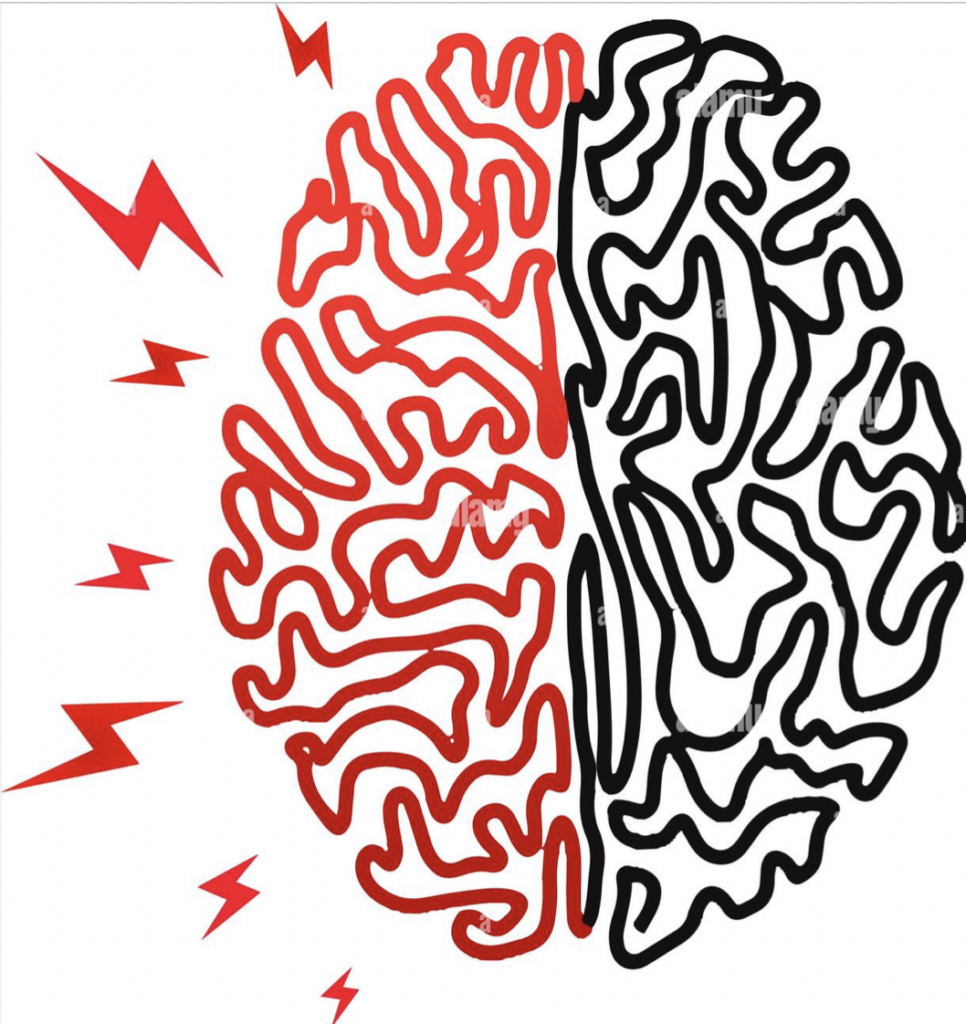
You have now completed the instructional content related to the impact of stress on the brain for this module click here to complete the associated learning activity for this content.
Or click here to continue on to read about mindfulness techniques that can help mitigate some of this stress!
